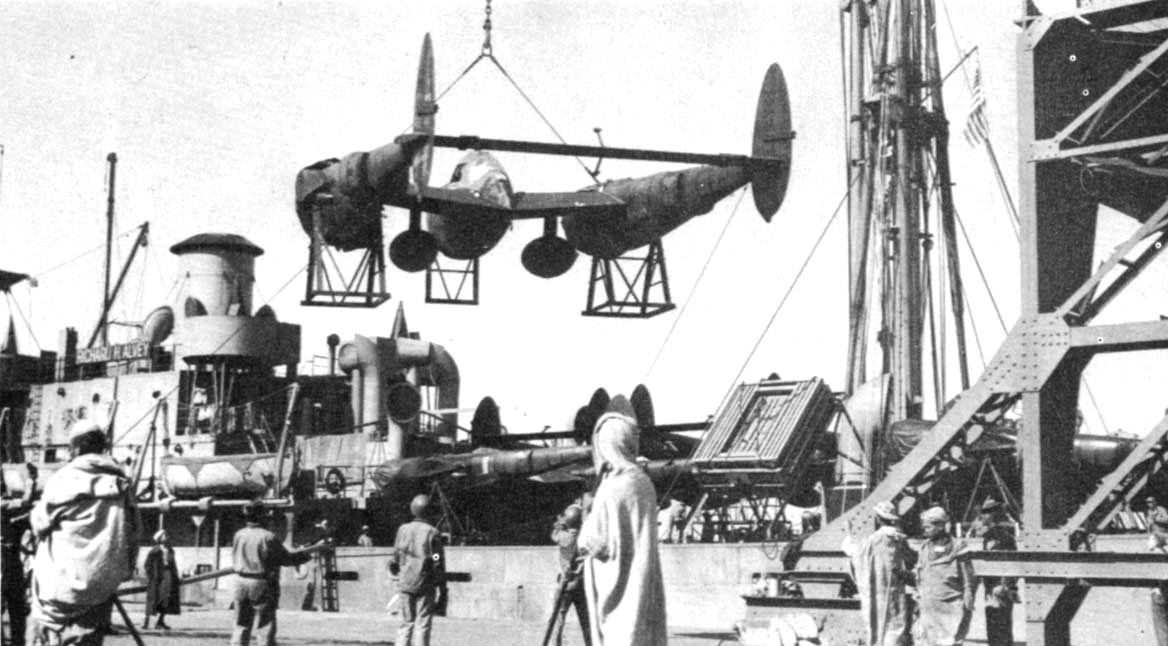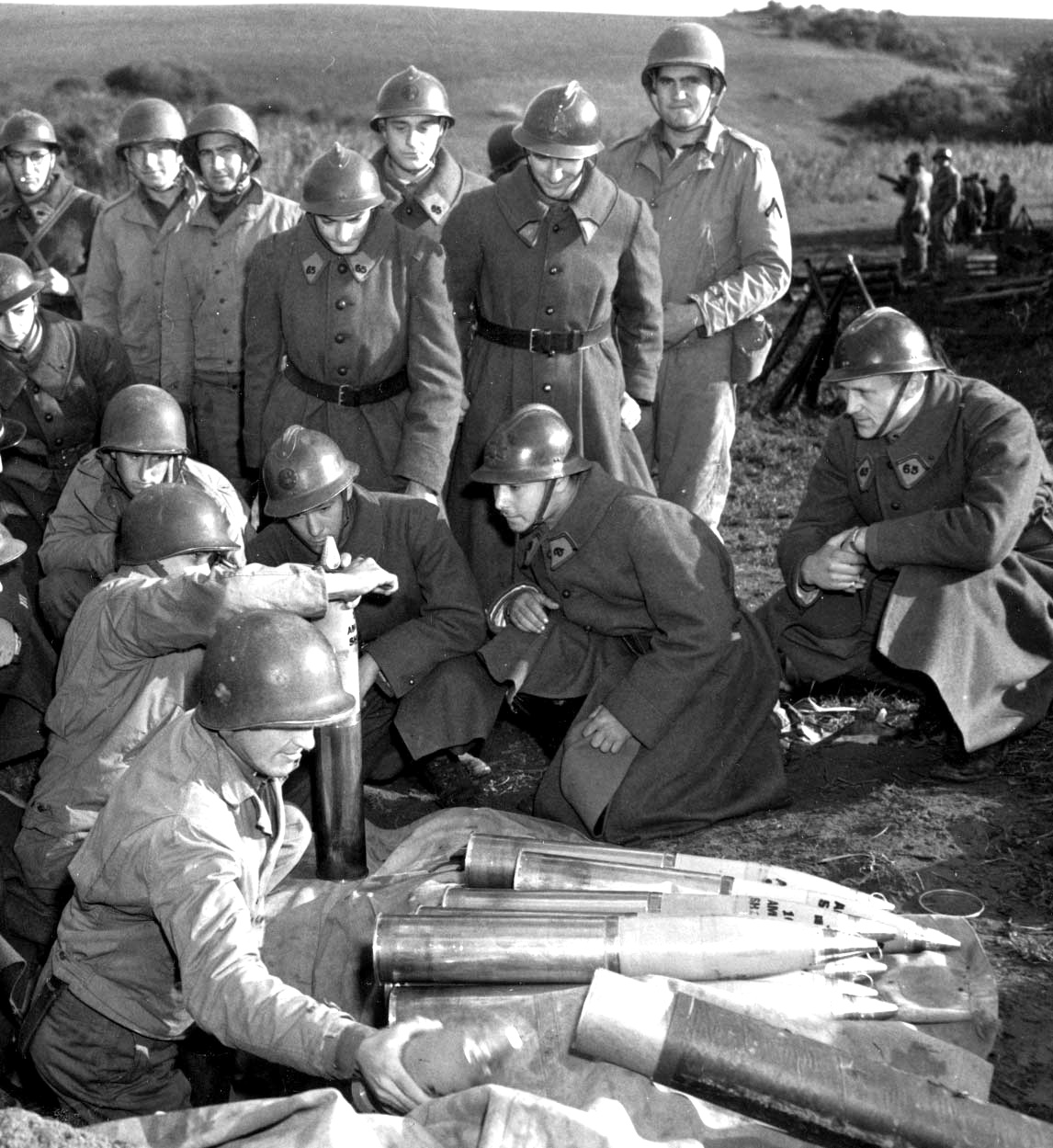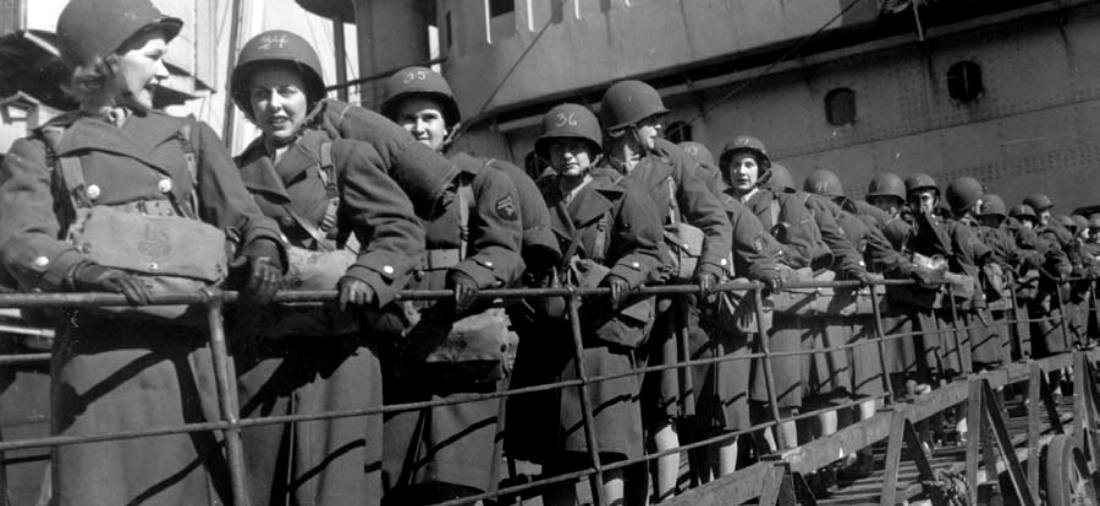(Above and Below) Lend-Lease Equipment for the French Army. P-38 Lockheed Lightning fighter plane (top) and Sherman tank (bottom). In January 1943, it was agreed that the United States would equip the French divisions formed from units then in North Africa, but comparatively little modern equipment became available for them in Tunisia until the summer of 1943. (P–38; Sherman tank M-4.)
French Troops Receiving Instructions on US Equipment, in this case on the 105-MM high-explosive shell. During the summer of 1943 shipments of arms and equipment for the French arrived in North African ports in increasing volume. Training was accelerated and by the end of the year two fully equipped French divisions were fighting side by side with the Americans and British in Italy. As more equipment became available, additional French divisions were sent to the front
Quartermaster Dump at Oran. Foodstuffs, stored in the open sometimes for months, suffered very little in spite of the hot African sun.
Freighter Burning in the Harbor of Algiers. The cause of the fire was not determined. While air raids on Algiers caused little damage to shipping and military installations, serious accidents and fires, some of which aroused suspicion of sabotage, were not infrequent
WAACS with full field equipment arriving at a North African port. The bill establishing the Women’s Army Auxiliary Corps (WAAC) became effective on May 14, 1942, and on July 1, 1943, a bill changing the status of the corps from an auxiliary serving with the Army to a component of the Army, Women’s Army Corps (WAC), became law. Most WAC duties in North Africa were of an administrative nature in offices of the various headquarters. Members of the Corps also worked in communications or other activities that could be handled as efficiently by women as by men














